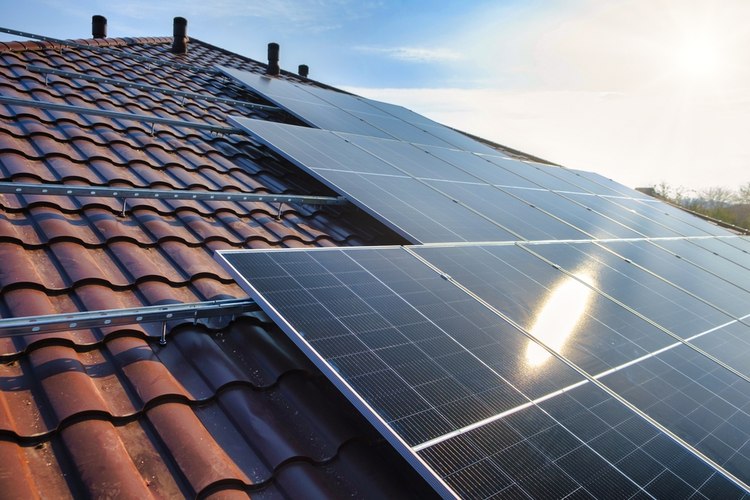Solar Roof Technology: Modern Energy Solutions for Homeowners
Solar roofs represent an innovative approach to renewable energy that integrates photovoltaic technology directly into roofing materials. Unlike traditional solar panels that mount on existing roofs, solar roofs replace conventional roofing materials with energy-generating tiles or shingles. This technology offers homeowners a seamless way to generate clean electricity while maintaining aesthetic appeal and structural integrity.

How Does Solar Roof Installation Work?
Solar roof installation involves replacing traditional roofing materials with photovoltaic tiles or integrated solar shingles. The process typically begins with removing existing roofing materials and assessing the roof structure for compatibility. Professional installers then apply weatherproofing materials and integrate the solar components with the home’s electrical system through inverters and monitoring equipment.
The installation requires specialized expertise in both roofing and electrical work. Installers must ensure proper alignment, weatherproofing, and electrical connections while maintaining the roof’s structural integrity. Most installations take several days to complete, depending on roof size and complexity. Local building permits and utility interconnection agreements are typically required before beginning the installation process.
Understanding Solar Roof Payback Period
The payback period for solar roofs varies based on several factors including system cost, local electricity rates, available incentives, and energy production capacity. Most solar roof systems achieve payback within 8 to 15 years, though this timeframe can be shorter in areas with high electricity costs or substantial solar incentives.
Calculating the payback period involves comparing the total system cost against annual energy savings and available tax credits. The federal solar Investment Tax Credit currently allows homeowners to deduct 30% of installation costs from federal taxes. Many states and utilities offer additional rebates or performance incentives that can accelerate the payback timeline. Energy production varies by geographic location, with southern and southwestern regions typically achieving faster payback periods due to increased solar exposure.
Key Advantages of Solar Roofs
Solar roofs offer several advantages over traditional roofing materials and conventional solar panel systems. The integrated design eliminates the need for roof penetrations required by traditional solar mounts, reducing potential leak points and maintenance concerns. Solar roofs also provide better aesthetic integration, appearing as part of the original roof design rather than an added component.
Durability represents another significant advantage. Quality solar roof materials often exceed the lifespan of conventional roofing materials while generating electricity. Most manufacturers offer 20 to 25-year warranties on both the roofing function and energy production capacity. Additionally, solar roofs can increase property values, with studies indicating that homes with integrated solar systems sell for premium prices compared to conventional homes.
Solar Roofs vs Traditional Solar Panels
Comparing solar roofs to traditional solar panels reveals distinct differences in cost, aesthetics, and installation complexity. Traditional solar panels typically cost less upfront and offer easier replacement or expansion options. Panel systems can also be installed without replacing existing roofing materials, making them suitable for newer roofs in good condition.
Solar roofs excel in aesthetic integration and dual functionality as both roofing material and energy generator. They eliminate the visual impact of traditional panels while providing weather protection and electricity generation. However, solar roofs generally require higher initial investments and more complex installation procedures. Traditional panels also offer greater flexibility in positioning and angling for optimal sun exposure, while solar roofs must conform to existing roof angles and orientations.
| Solar Solution | Provider | Cost Estimation | Key Features |
|---|---|---|---|
| Solar Roof Tiles | Tesla | $15,000-$30,000 | Integrated glass tiles, mobile app monitoring |
| Solar Shingles | GAF Energy | $12,000-$25,000 | Traditional shingle appearance, warranty coverage |
| Integrated Solar | CertainTeed | $10,000-$22,000 | Conventional roofing integration, modular design |
| Traditional Panels | SunPower | $8,000-$18,000 | High efficiency, separate mounting system |
Prices, rates, or cost estimates mentioned in this article are based on the latest available information but may change over time. Independent research is advised before making financial decisions.
Choosing the Right Solar Roof Solution
Selecting an appropriate solar roof system requires evaluating multiple factors including roof condition, budget, aesthetic preferences, and energy goals. Homeowners with aging roofs may find solar roofs particularly attractive since they address both roofing replacement and energy generation needs simultaneously. The orientation and pitch of existing roofs significantly impact energy production potential, with south-facing roofs at 30 to 45-degree angles typically providing optimal performance.
Professional energy assessments can help determine system sizing requirements and expected energy production. Many solar installers offer design services that model energy production based on local weather patterns, roof characteristics, and household energy consumption. Financing options including solar loans, leases, and power purchase agreements can make solar roofs accessible to homeowners with varying budget constraints.
Solar roof technology continues evolving with improvements in efficiency, durability, and aesthetic options. As manufacturing scales increase and technology advances, costs are expected to decrease while performance characteristics improve. Homeowners considering solar roofs should research local installers, compare warranty terms, and verify licensing and insurance coverage before proceeding with installation. Professional consultation ensures optimal system design and compliance with local building codes and utility requirements.






